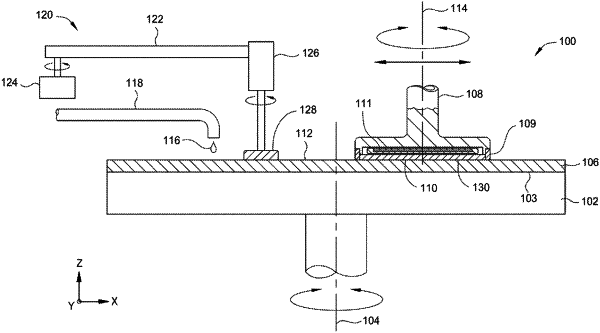| CPC C09D 11/38 (2013.01) [B24B 37/245 (2013.01); B33Y 70/00 (2014.12); B33Y 80/00 (2014.12); C09D 11/101 (2013.01); C09D 11/107 (2013.01); B29C 64/112 (2017.08); B29K 2033/08 (2013.01); B29L 2031/736 (2013.01); B33Y 10/00 (2014.12)] | 20 Claims |

|
1. A method of forming a polishing pad, comprising:
depositing a plurality of composite layers with a 3D printer to reach a target thickness, wherein depositing the plurality of composite layers comprises:
dispensing one or more droplets of a curable resin precursor composition onto a support, wherein the curable resin precursor composition comprises:
one or more acrylate components; and
an anionic monomer having structure:
 wherein at least one of R1, R2, and R3 is an alkyl ester radical, and the anionic monomer is present in an amount ranging between 2 wt. % to about 10 wt. % based on a total weight of the curable resin precursor composition;
dispensing one or more droplets of a porosity-forming composition onto the support, wherein at least one component of the porosity-forming composition is removable to form pores in the polishing pad; and
curing the curable resin precursor composition to form structural material containing regions comprising the anionic monomer, the structural material containing regions surrounding pore forming regions formed from the porosity-forming composition, wherein at least one exposed surface of the structural material containing region has a zeta potential of −50 mV or less.
|